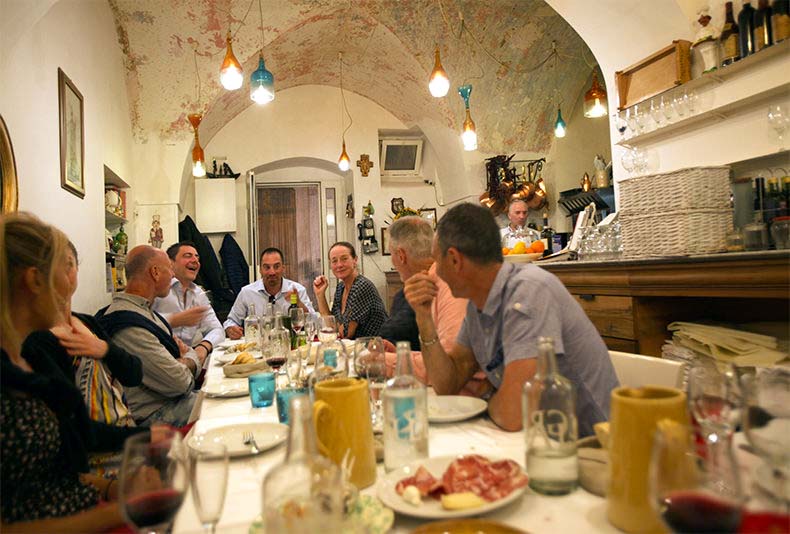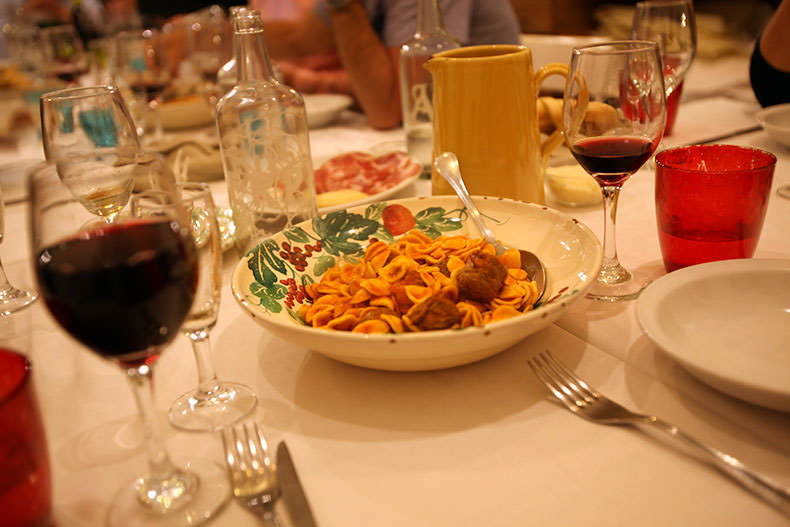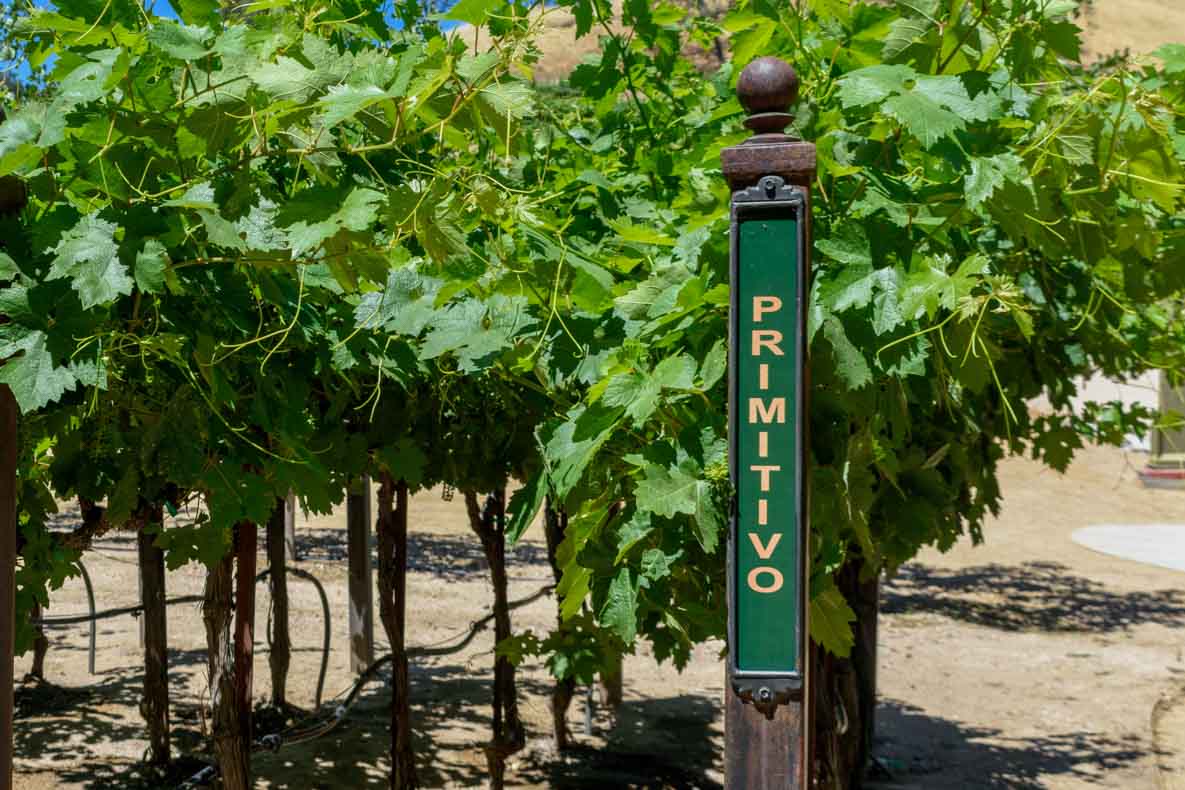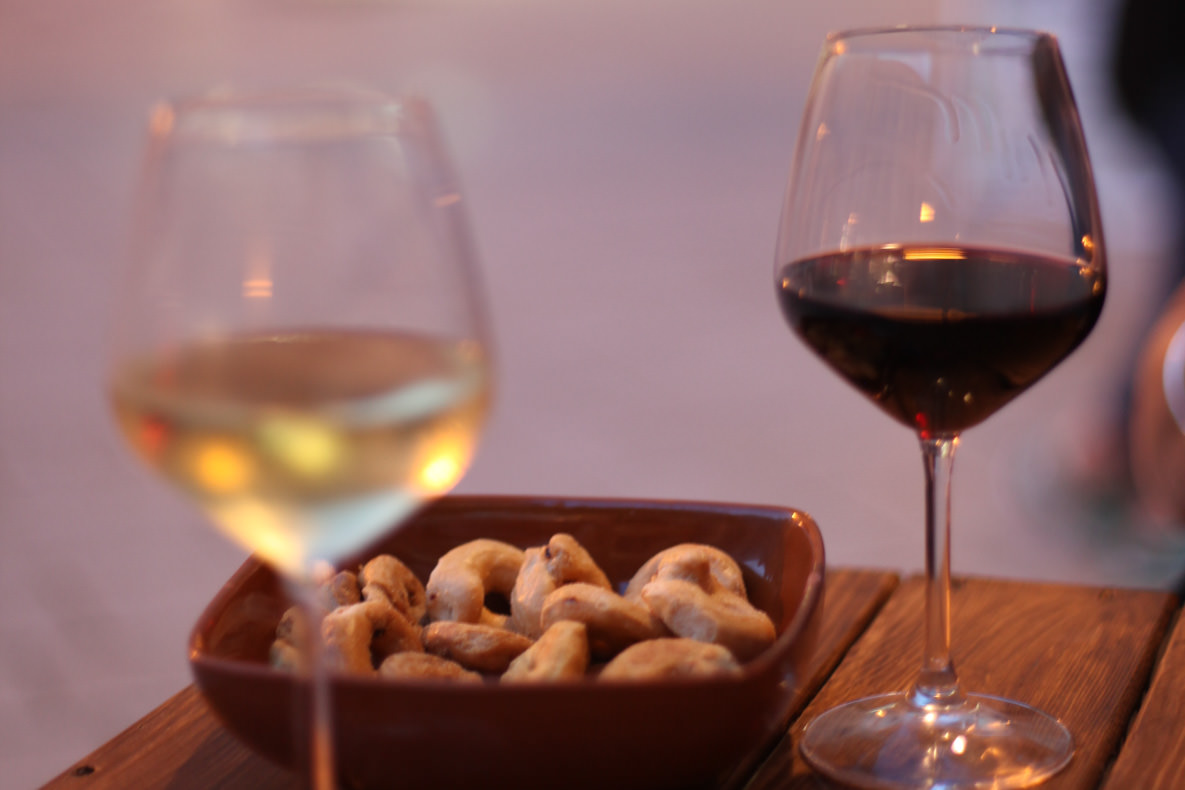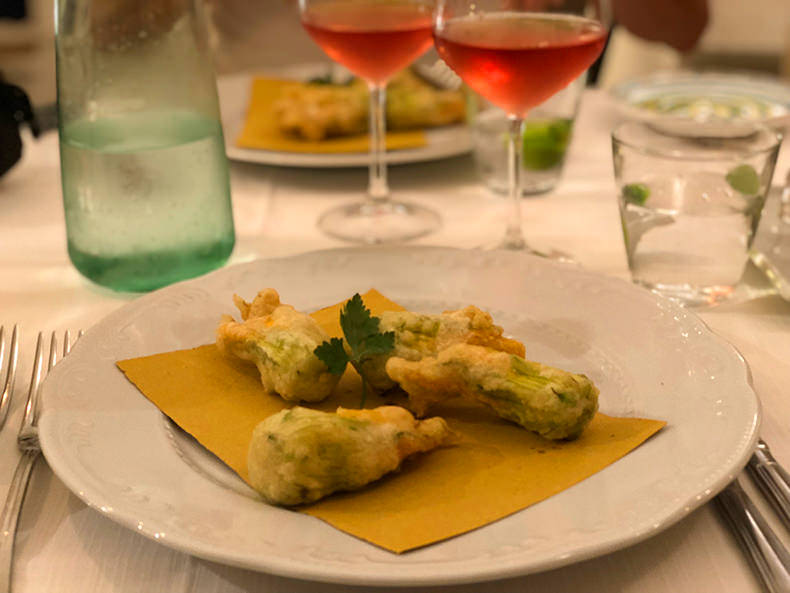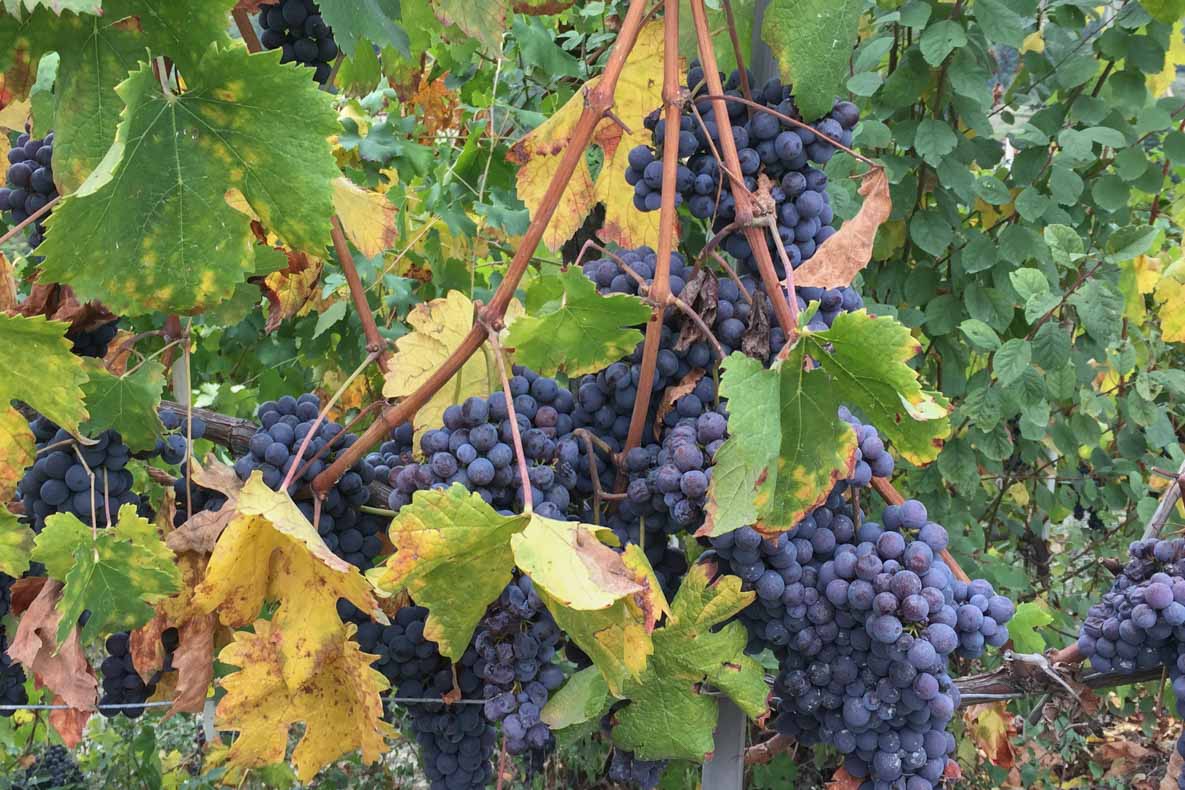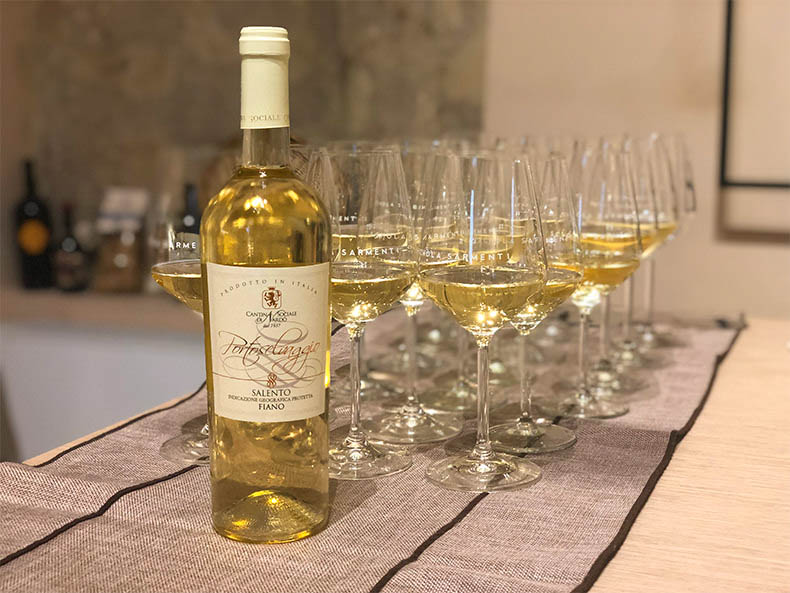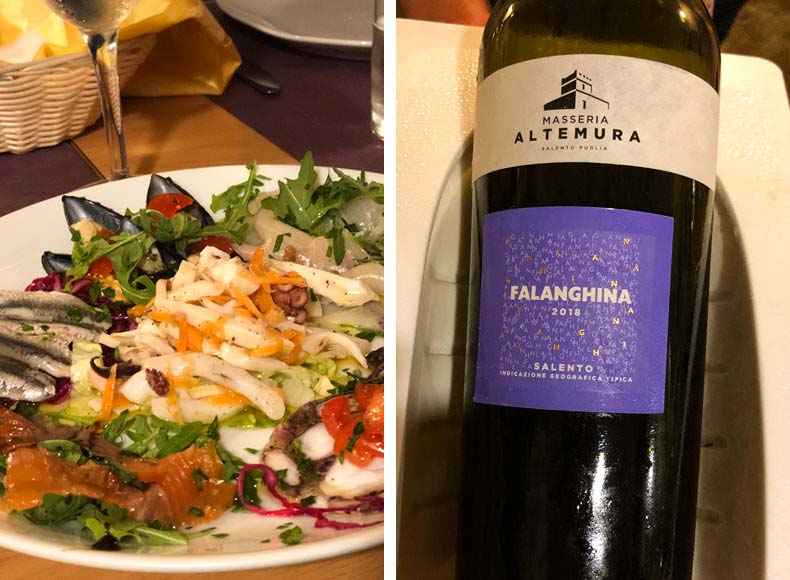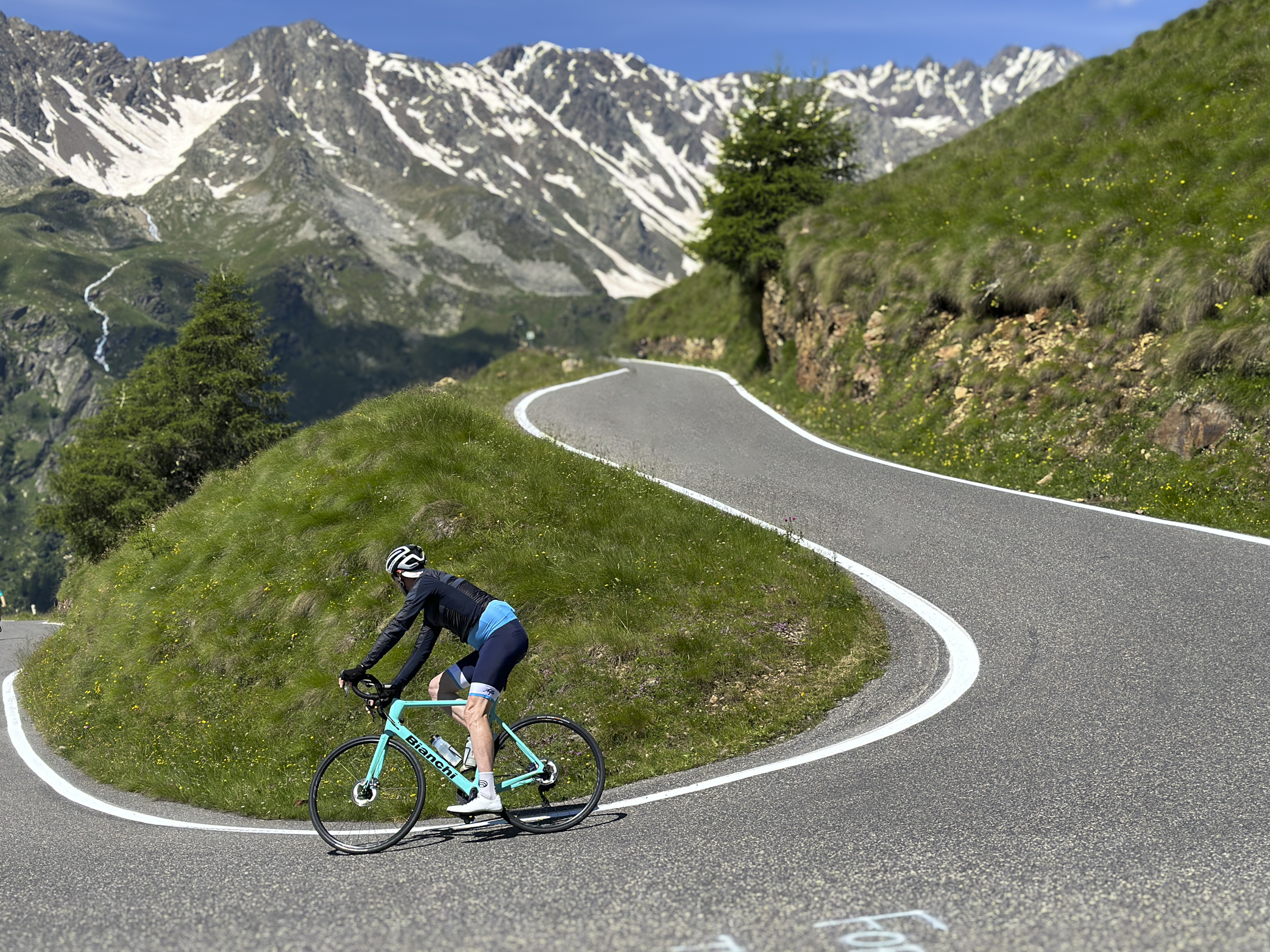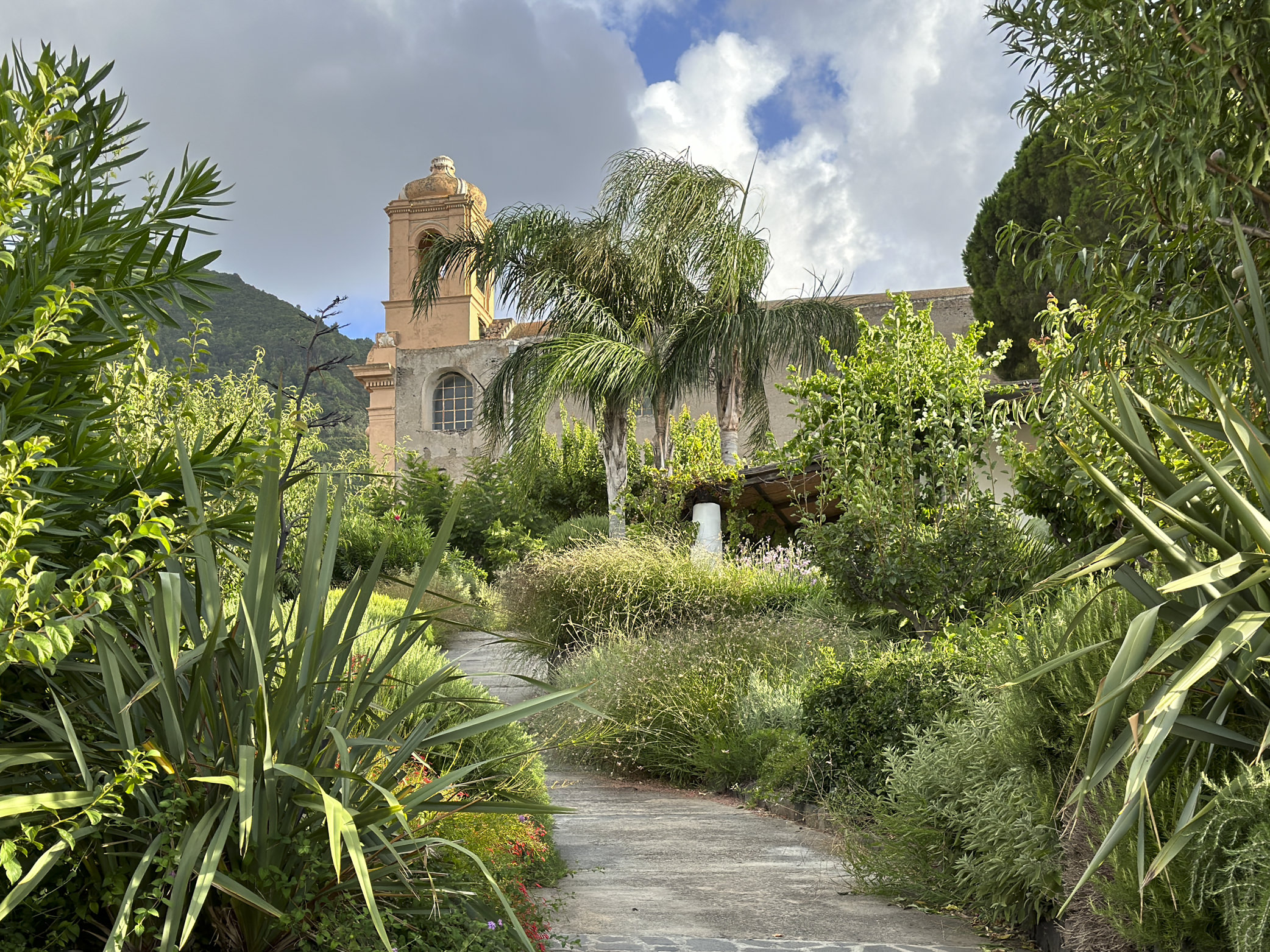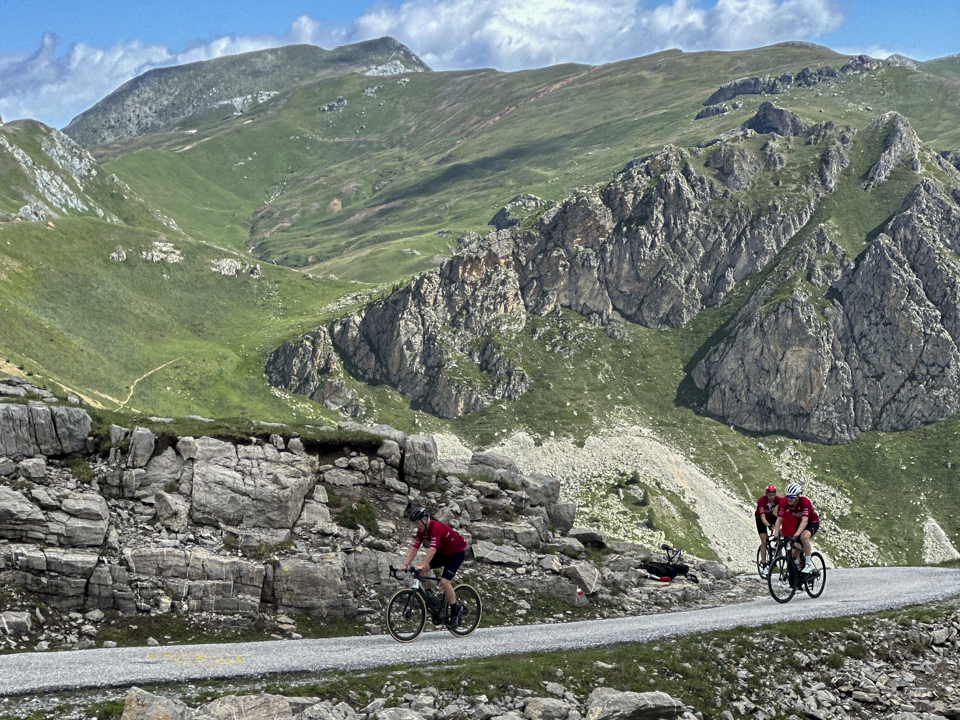This is the first in a series of blogs over the coming months that will highlight some of the different wines and cuisines across the regions we traverse on our Italian cycling tours, starting with Puglia.
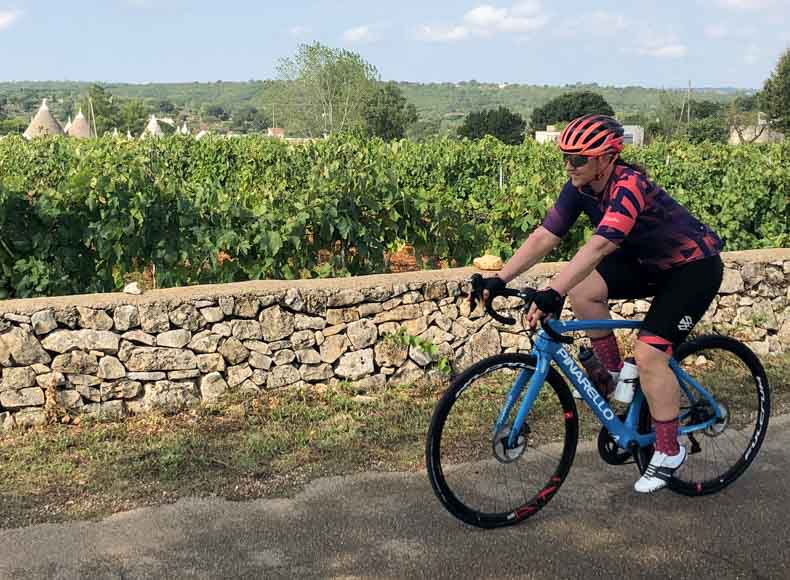
Puglia; the region and wine culture
Puglia is the heel of Italy’s boot shaped landscape. A region of some 19,000 square kilometres (7300 square miles), it runs along the Adriatic Sea to the east and the Strait of Otranto and Gulf of Taranto to the south. It faces Greece and Albania across the Ionian and Adriatic Seas respectively, and its southernmost tip, the high heel, is the Salento Peninsula. Inland it is bordered by Molise to the north, Campania to the west and Basilicata to the south-west.
The province of Puglia produces about 30 per cent of Italy’s wine in volume and has a high number of DOCs. Despite being a prominent agricultural region with a winemaking heritage since the 7th century, very few people have been aware of Puglia’s wine until recent years. This is because, together with Sicily, Puglia was always known as the ‘mass producers’ of Europe. The huge co-ops that were once content to churn out white vermouth base and blending wines are now being sold to producers who are more interested in quality than quantity. The 90’s saw fresh investments into Puglia from influential wine producers, and over the last 20 years, a grassroots movement of young, local winemakers has emerged, placing Puglia in the spotlight on a global stage, not only for wine, but for tourism overall.
Riding and travelling through Puglia is a delight. A simple detour off the autostrada takes you onto narrow country lanes with olive groves on either side, and with vineyards, almond trees and fig trees dotted throughout the farming landscape. White dry-stone walls separate the individual groves and vineyards, and each holding is meticulously kept. There are almost a quarter of a million of these individually owned plots in the region and passing through them on our rides, gives you a real sense of the still very rustic and ‘family run’ feel of this region.
The wines, tastes and experiences of Puglia
Menhir Salento is located in Minervino di Lecce, a small town in the south near Otranto. It hosts archaeological sites and sits amongst ancient farms, dolmen and menhir; it is a special place with a soil where agriculture, enology and gastronomy are created.
Two grapes that dominate the wine landscape in Puglia are the Primitivo and Negroamaro, but here we also highlight a few other varieties which Menhir Salento produce, and which we also experience on our Puglia Cycling Tours.
Primitivo
Primitivo is a distant relative of the American zinfandel and the only mark of origin in Puglia to designate a single-varietal wine from the Primitivo grape, producing a range of attractive and interesting wines which are dry and have a soft, fruity flavour.
Colour: strong ruby-red with a violet tint
Bouquet: ripe morello cherries, mint and blackberries
Palate: pleasant, fresh, clear and expressive
Food Pairing: salted meat, such as capocollo and soppressata, bacon and ham, maritati (type of Puglian pasta) with ragout of mixed meat, roast lamb with wild thyme and grilled potatoes, partially matured cheeses, such as caciocavallo.
Serve at 16 – 18 °C.
We get to experience Primitivo often on tour but one of our favourite experiences is in true rustic Pugliese style at a small trattoria in Locorotondo. As stories are told, carafes of the homemade Primitivo wine flow. It is the perfect easy drinking accompaniment as we meander our way through a superb 5 course dinner.
Negroamaro
The aptly named Negroamaro, meaning ‘black and bitter’, is the base for 11 DOC reds on the Salento peninsula. While it can be a single varietal, the tannins in the Negroamaro are often softened by the addition of varieties including Malvasia, Montepulciano and Sangiovese.
Colour: deep red, purplish
Bouquet: a pleasantly complex bouquet, flavoured with spices and figs, blackcurrants and blackberries
Palate: subtle, pleasant and fresh with flavours of herbs and cherry jam with a long lasting and harmonious aftertaste
Food Pairing: cavatelli (type of Puglian pasta) with ragout of red meat, stewed rabbit, grilled lamb, soups made with peas, beans and other vegetables, partially matured cheeses such as pecorino (sheep’s milk cheese).
Serve at 16 – 18 °C.
We love Negroamaro. It’s such an easy drinking red and this one by Menhir Salento, is sensational.
Rosato
The Negroamaro of the Salento is also used to advantage to make flavoursome Rosati, which is a splendid accompaniment to the local seafood and perfect in the midst of a summer.
Colour: cherry rose
Bouquet: raspberry, candy bonbons.
Palate: red fruit and basil
Food Pairing: short aged cheeses, grilled poultry, and shellfish.
Serve at 8 – 10 °C.
Rosato is enjoyed along with many of our meals on our cycling tours of Puglia, particularly given two out of three of our tours each year are in the warmth of Summer. It is the perfect drink at aperitivo, and also with the wonderful fresh seafood enjoyed on tour.
Susumaniello
Susumaniello is a little-known red-wine grape from Puglia. Grown almost exclusively in the Salice Salento area, and in a tiny number of vineyards around Brindisi, it ranks among the world’s rarest wine grapes. The variety is enjoying a minor surge of popularity due to renewed interest in obscure Italian grape varieties.
Susumaniello grapes are used to make both red and rosé wines – sometimes vinified alone, but more often blended with Negroamaro. The classic red Susumaniello wine has a deep ruby hue and aromas of red berries and plums. Richer, more concentrated examples show spicy, peppery aromas and flavours of dark chocolate.
Colour: intense ruby-red with a purple red tint
Bouquet: red berry with spiced fragrances
Palate: round and generous structure with !ne tannins
Food Pairing: hand-made pasta (orecchiette, lasagne, maccheroni) with meat ragout, matured cheeses (caciocavallo, pecorino) and herb cheeses; grilled meat, wild boar, pork.
Serve at 16 – 18 °C.
Fiano
Fiano has been in Puglia many centuries. Fiano is early-ripening, vigorous, and quite adaptable to local environments. This delicious white variety is experiencing a true renaissance, with new vineyards being continuously planted from north to south in the region.
Colour: straw yellow with golden hues.
Bouquet: lyclus, plum and jasmine.
Palate: elegant, warm and enveloping, with notes of honey.
Food Pairing: herb cheeses, fish soup, salad of smoked salmon, risotto with asparagus and shrimps, risotto with wild chicory and gorgonzola, gnocchi made from pumpkin with taleggio cheese, sushi, fig and almond tart, marzipan.
Serve at 8 – 10°C
On day five on tour, we arrive into a beautiful little town near Gallipoli, where our daily aperitivo has a slight twist in that we drop into a local enoteca to try a handful of the locally made wines.
We always start with a Fiano and progress on to something else, but there are always a few guests so enamoured with the Fiano, they elect to have a 2nd glass rather than a new variety. It is that good and just delicious with the local food of Puglia.
Falanghina
Falanghina is an ancient Italian white-wine grape grown extensively in the neighbouring region of Campania, and has also reportedly been traced back to Greek origin. In recent times, Falanghina has soared back into popularity in Italy, after a period of relative obscurity.
We experience the Falanghina wine only once on our Tour of Puglia at a special Osteria in the town of Otranto, with a very strong focus on wine. Francesco’s knowledge and recommendation of local goodness is always one we trust.
Falanghina is known for its citrus-blossom aromas, and typically has apple and pear flavours, and depending on where it is grown, will either have spicy or mineral notes. The Masseria Altemura version in this photo has more mineral notes and we think it pairs beautifully with the local seafood, enjoyed on our night in Otranto.
If you’re interested in joining us on our Tour of Puglia, visit our tour page.

